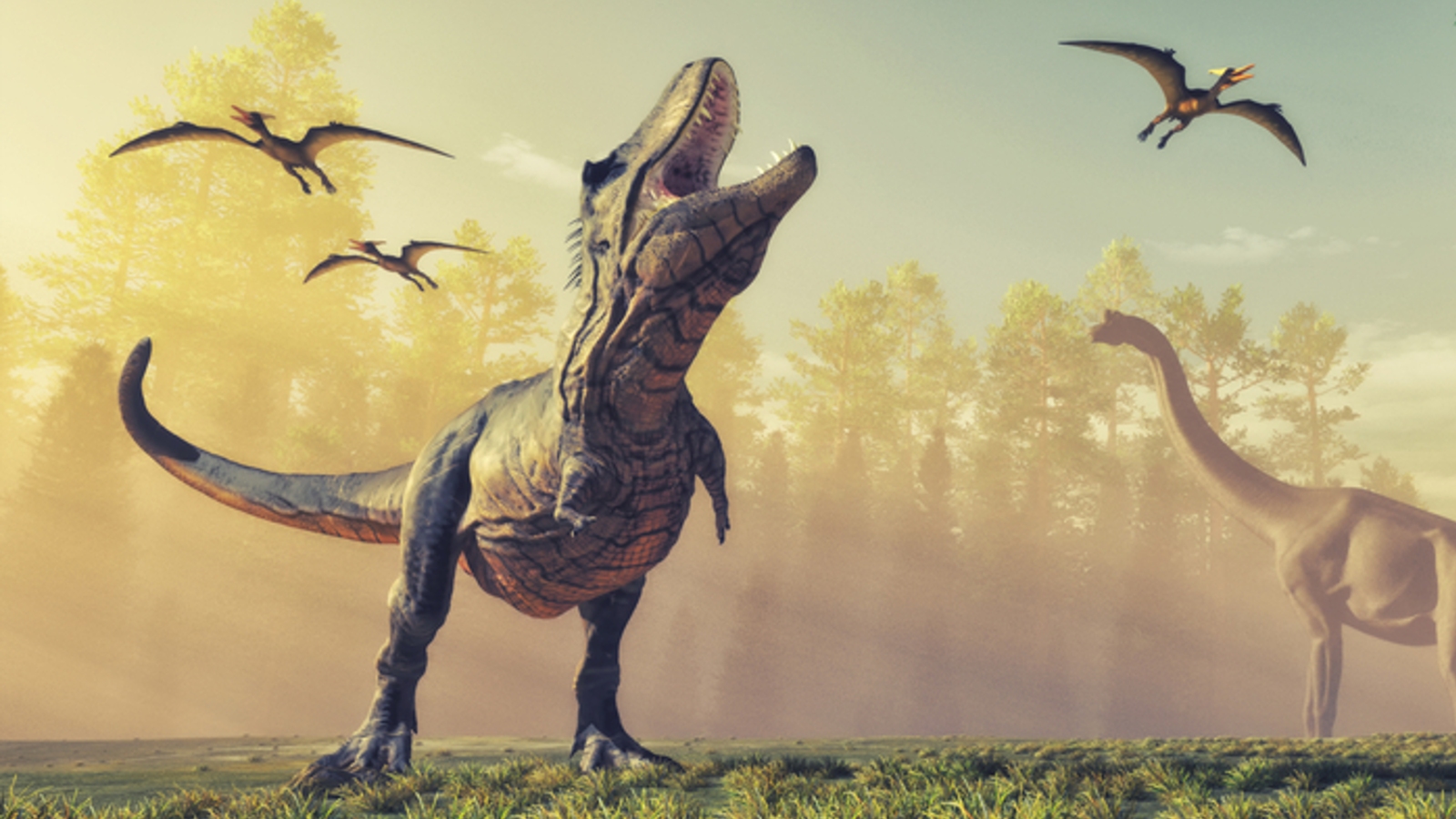Newfound T. rex relative was an even bigger apex predator, remarkable skull discovery suggests
The newly identified tyrannosaur species is the closest known relative of T. rex and could have been even larger than the famous dinosaur king.

Paleontologists have uncovered a never-before-seen tyrannosaur species in North America that has been masquerading as a Tyrannosaurus rex for decades. The newly identified species is the closest known relative of T. rex and could have been even larger than the dinosaur king, a new study shows.
The newfound sister species, Tyrannosaurus mcraeensis, was identified from a partial fossilized skull that paleontologists unearthed in 1983 while exploring the Hall Lake Formation in New Mexico. The calcified cranium was originally classified as a T. rex skull and has been displayed at the New Mexico Museum of Natural History and Science (NMMNHS) ever since. But in 2013, a team of paleontologists decided to reevaluate the skull after noticing subtle yet suspicious anomalies in its shape.
In a new study published Thursday (Jan. 11) in the journal Scientific Reports, the team revealed that the skull dates to between 73 million and 71 million years ago during the Cretaceous period (145 million to 66 million years ago). This makes T. mcraeensis between 3 million and 5 million years older than T. rex.
The stark age difference was the main giveaway that they had discovered a new species. But there were also major morphological differences that stand T. mcraeensis apart from the infamous dinosaur king.
"The most striking difference is the shape of the lower jaw, which is more slender and curved [than T.rex]," study co-author Nick Longrich, a paleontologist at the University of Bath in the U.K., told Live Science. "It also lacks the prominent bosses or hornlets found over the top of the eyes in T. rex."
T. mcraeensis also has fewer teeth than most other tyrannosaurs, which is one of the main reasons why the researchers believe it is T. rex's closest relative — because T. rex also has fewer teeth, Longrich said.
Related: Nanotyrannus vs. T. rex saga continues: Controversial study 'doesn't settle the question at all'
Get the world’s most fascinating discoveries delivered straight to your inbox.
The size of the skull suggests this particular T. mcraeensis was around the same size as a typical adult T. rex, which grew to around 39 feet (12 meters) long — around the same size as a double-decker bus. But other individuals of the same species may have been even larger.
"It's not impossible" that T. mcraeensis could have been even larger than T. rex, Longrich said. "Since we only have one individual, it's unlikely we've found the biggest individuals of the species."
T. mcraeensis was likely the apex predator of its time, just like T. rex, Longrich said. And if the pair had existed at the same time, they would have "probably been pretty evenly matched" in a fight, he added.
T. rex and most other tyrannosaurs lived exclusively on an ancient landmass known as Laramidia, which was made up of what is now the western coast of North America from Alaska down to Mexico.
Until now, T. rex's closest relatives were a pair of tyrannosaurs named Tarbosaurus bataar and Zhuchengtyrannus magnus, which are found in modern-day China and Mongolia. Both species dated back further than T. rex, which suggests tyrannosaurs may have first emerged in what is now Asia, although this has never been confirmed.
The new findings suggest that Laramidia is a more likely origin of the tyrannosaur lineage, which would imply that these dinosaurs later spread to Asia. However, there is still uncertainty around this.
Laramidia was home to a wide variety of dinosaur species, including several other recent discoveries, such as Sierraceratops turneri — a horned herbivore similar to Triceratops that was described in a 2022 paper and was also previously misidentified as a different dinosaur species.
The new findings are further evidence that New Mexico is one of the best places in the world to search for new dinosaur species, study co-author Spencer Lucas, the curator of geology and paleontology at NMMNHS, said in a statement sent to Live Science. "Many new dinosaurs remain to be discovered in the state, both in the rocks and in museum drawers," he added.

Harry is a U.K.-based senior staff writer at Live Science. He studied marine biology at the University of Exeter before training to become a journalist. He covers a wide range of topics including space exploration, planetary science, space weather, climate change, animal behavior and paleontology. His recent work on the solar maximum won "best space submission" at the 2024 Aerospace Media Awards and was shortlisted in the "top scoop" category at the NCTJ Awards for Excellence in 2023. He also writes Live Science's weekly Earth from space series.




